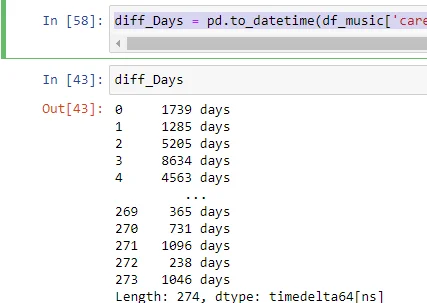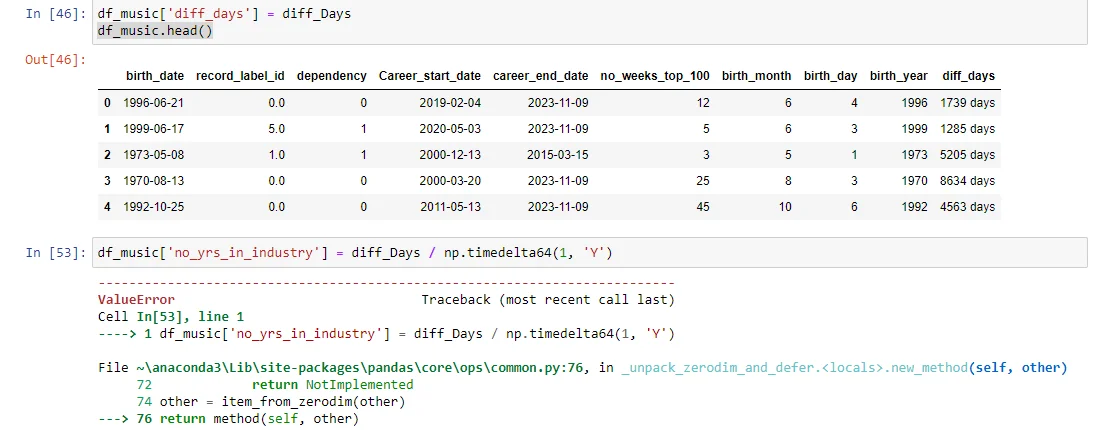Clarify Practice Exam 2 - Machine Learning Section Question 7 & 8
Question 7: I executed the code below as written in the reviewed answer and i got the answer in days. Is this correct?
diff_Days = pd.to_datetime(df_music['career_end_date'], format = '%Y-%m-%d') - pd.to_datetime(df_music['Career_start_date'], format = '%Y-%m-%d')

Question 8 - I proceeded to question 8 and I got this error below: that unit 'Y' is not supported.
How do I resolve this please?


Hi Nike!
Thanks for reaching out.
Question 7: Yes, when you subtract two `datetime` objects in Pandas, the result is a `Timedelta` object that represents the difference in days (and potentially in hours, minutes, and seconds if the time is also provided).
Question 8: The error regarding the unit 'Y' not being supported is likely because you tried to convert the `Timedelta` object into years using a method or function that doesn't recognize 'Y' as a valid unit for year. In Pandas, you can't directly convert a `Timedelta` to years because a year can vary in length (due to leap years). However, you can approximate this by dividing the number of days in the `Timedelta` by 365.25 (taking into account leap years on average):
years = diff_Days / pd.Timedelta(days=365.25)
This will give you the duration in years as a floating-point number. If you need to operate on a `Timedelta` object and want to extract the number of years, always ensure to handle it with a proper conversion like the above, since there's no direct 'Y' unit in Pandas time deltas.
Hope this helps.
Best,
Tsvetelin
Where do we get the absenteeism_module file?
Hi Muhammad!
Thanks for reaching out.
Please note that we have updated the files related to working with the Absenteeism Dataset so that they correspond to the current version of the relevant Python modules.
You can find the updated files in the resources section of the following lecture):
https://learn.365datascience.com/courses/sql-tableau-python/downloading-the-section-resources/
Feel free to let us know should you encounter any difficulties when using them. Thank you.
Kind regards,
Tsvetelin